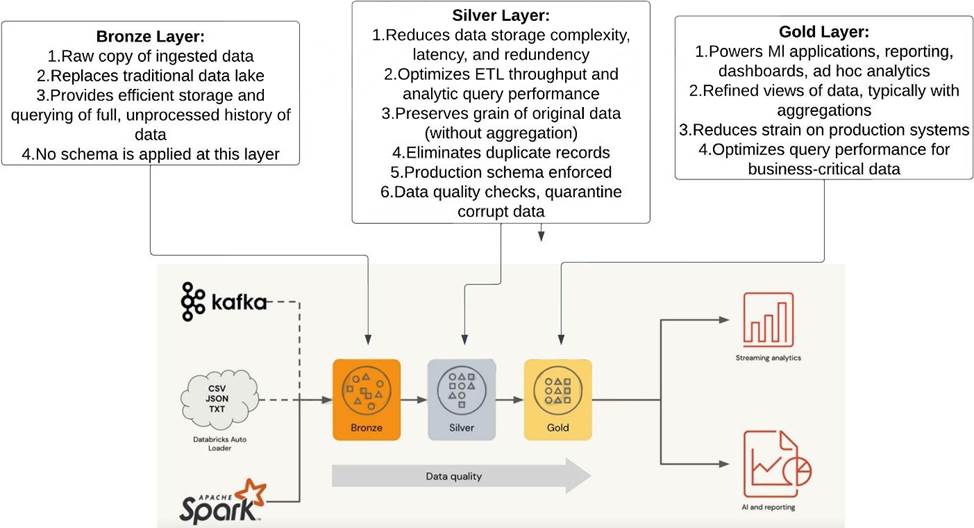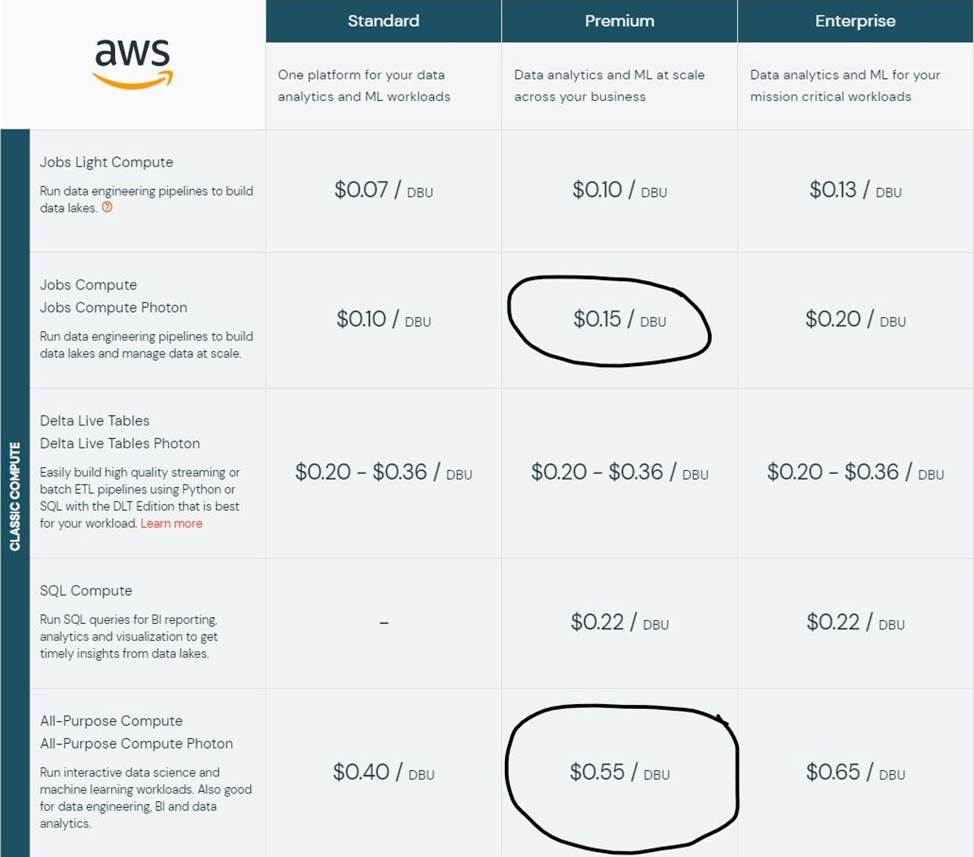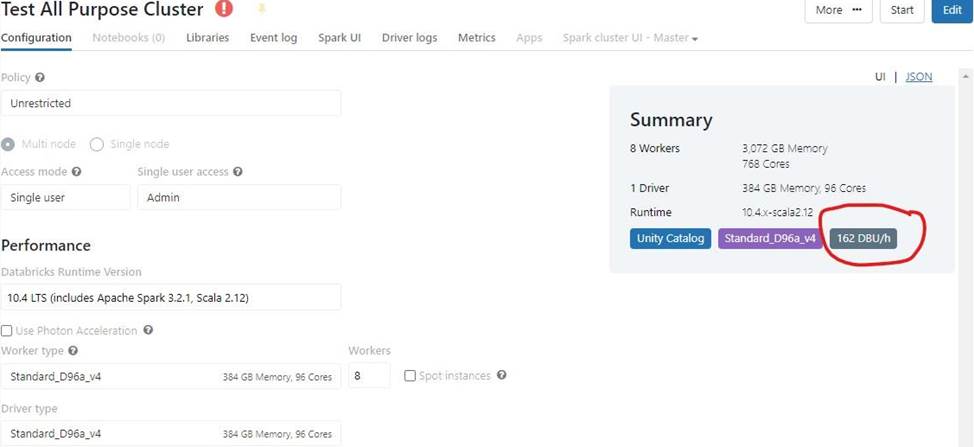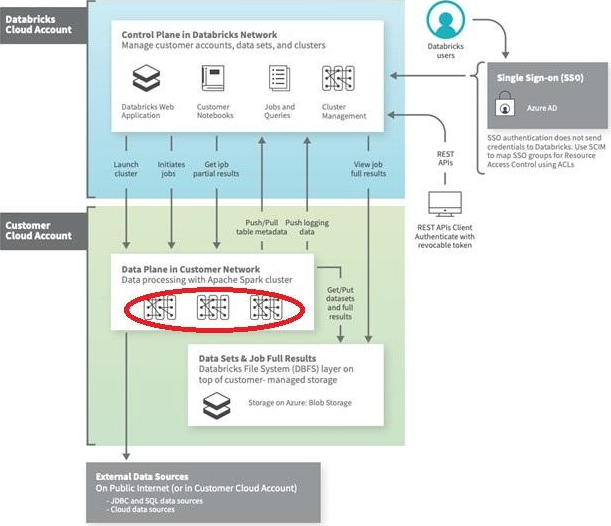Databricks Databricks Certified Data Engineer Professional Databricks Certified Data Engineer Professional Exam Online Training
Databricks Databricks Certified Data Engineer Professional Online Training
The questions for Databricks Certified Data Engineer Professional were last updated at Dec 17,2025.
- Exam Code: Databricks Certified Data Engineer Professional
- Exam Name: Databricks Certified Data Engineer Professional Exam
- Certification Provider: Databricks
- Latest update: Dec 17,2025
What is the main difference between the bronze layer and silver layer in a medallion architecture?
- A . Duplicates are removed in bronze, schema is applied in silver
- B . Silver may contain aggregated data
- C . Bronze is raw copy of ingested data, silver contains data with production schema and optimized for ELT/ETL throughput
- D . Bad data is filtered in Bronze, silver is a copy of bronze data
You noticed that a team member started using an all-purpose cluster to develop a notebook and used the same all-purpose cluster to set up a job that can run every 30 mins so they can update un-derlying tables which are used in a dashboard.
What would you recommend for reducing the overall cost of this approach?
- A . Reduce the size of the cluster
- B . Reduce the number of nodes and enable auto scale
- C . Enable auto termination after 30 mins
- D . Change the cluster all-purpose to job cluster when scheduling the job
- E . Change the cluster mode from all-purpose to single-mode
Which of the following locations hosts the driver and worker nodes of a Databricks-managed cluster?
- A . Data plane
- B . Control plane
- C . Databricks Filesystem
- D . JDBC data source
- E . Databricks web application
Which of the following data workloads will utilize a Bronze table as its destination?
- A . A job that aggregates cleaned data to create standard summary statistics
- B . A job that queries aggregated data to publish key insights into a dashboard
- C . A job that ingests raw data from a streaming source into the Lakehouse
- D . A job that develops a feature set for a machine learning application
- E . A job that enriches data by parsing its timestamps into a human-readable format
Which of the following data workloads will utilize a Bronze table as its destination?
- A . A job that aggregates cleaned data to create standard summary statistics
- B . A job that queries aggregated data to publish key insights into a dashboard
- C . A job that ingests raw data from a streaming source into the Lakehouse
- D . A job that develops a feature set for a machine learning application
- E . A job that enriches data by parsing its timestamps into a human-readable format
Which of the following data workloads will utilize a Bronze table as its destination?
- A . A job that aggregates cleaned data to create standard summary statistics
- B . A job that queries aggregated data to publish key insights into a dashboard
- C . A job that ingests raw data from a streaming source into the Lakehouse
- D . A job that develops a feature set for a machine learning application
- E . A job that enriches data by parsing its timestamps into a human-readable format
Which of the following data workloads will utilize a Bronze table as its destination?
- A . A job that aggregates cleaned data to create standard summary statistics
- B . A job that queries aggregated data to publish key insights into a dashboard
- C . A job that ingests raw data from a streaming source into the Lakehouse
- D . A job that develops a feature set for a machine learning application
- E . A job that enriches data by parsing its timestamps into a human-readable format
Which of the following data workloads will utilize a Bronze table as its destination?
- A . A job that aggregates cleaned data to create standard summary statistics
- B . A job that queries aggregated data to publish key insights into a dashboard
- C . A job that ingests raw data from a streaming source into the Lakehouse
- D . A job that develops a feature set for a machine learning application
- E . A job that enriches data by parsing its timestamps into a human-readable format
What could be the expected output of query SELECT COUNT (DISTINCT *) FROM user on this table

- A . 3
- B . 2 (Correct)
- C . 1
- D . 0
- E . NULL
A DELTA LIVE TABLE pipelines can be scheduled to run in two different modes, what are these two different modes?
- A . Triggered, Incremental
- B . Once, Continuous
- C . Triggered, Continuous
- D . Once, Incremental
- E . Continuous, Incremental
Latest Databricks Certified Data Engineer Professional Dumps Valid Version with 278 Q&As
Latest And Valid Q&A | Instant Download | Once Fail, Full Refund





